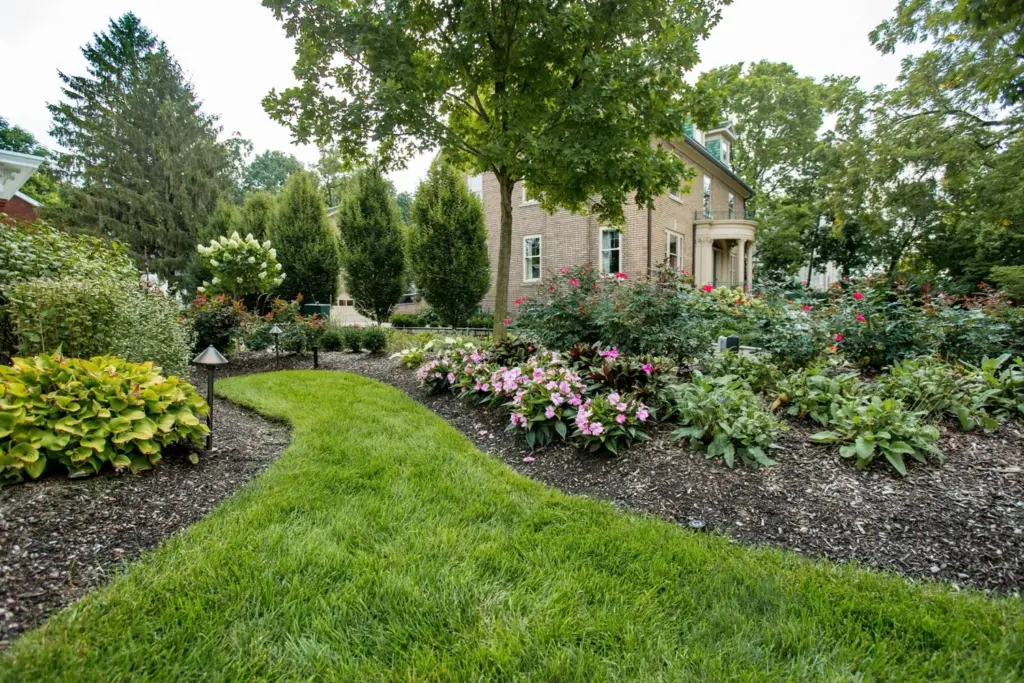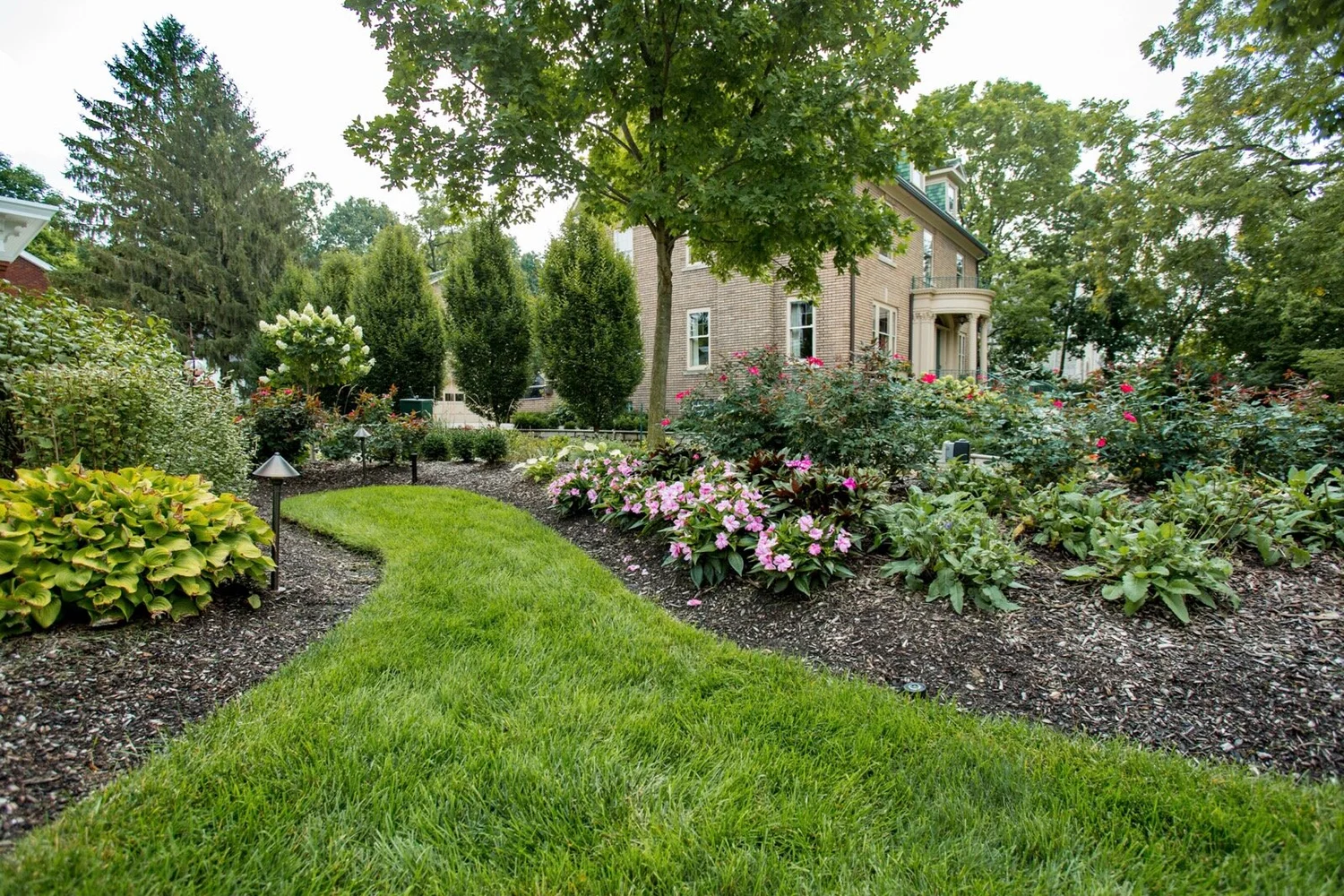
Elevating Outdoor Spaces: Expert Landscape Design in Columbus, Ohio
Columbus, Ohio, a city known for its vibrant neighborhoods and thriving urban environment, is increasingly valuing the importance of well-designed outdoor spaces. Landscape design in Columbus, Ohio, goes beyond mere aesthetics; it’s about creating functional, sustainable, and beautiful environments that enhance the quality of life for residents and contribute to the city’s overall appeal. Whether you’re a homeowner looking to transform your backyard or a business owner seeking to create an inviting commercial landscape, understanding the nuances of Columbus, Ohio, landscape design is crucial.
The Growing Importance of Landscape Design
In recent years, there’s been a significant shift in how people view outdoor spaces. They are no longer seen as simply extensions of the home or office but as integral parts of the living and working environment. This change has fueled the demand for professional landscape design services. A well-designed landscape can increase property value, improve curb appeal, and provide a space for relaxation, entertainment, and connection with nature. In Columbus, Ohio, where the climate presents unique challenges and opportunities, expert landscape design is essential for creating thriving outdoor spaces.
Key Considerations for Columbus, Ohio Landscape Design
Designing landscapes in Columbus, Ohio, requires careful consideration of several factors:
- Climate: Columbus experiences four distinct seasons, with hot, humid summers and cold, snowy winters. Landscape design must account for these temperature extremes and choose plants that can thrive in the local climate.
- Soil: The soil composition in Columbus varies, but it’s often clay-based and can be poorly drained. Soil testing and amendments are crucial for ensuring healthy plant growth.
- Water Conservation: With increasing concerns about water scarcity, sustainable landscape design practices are becoming more important. This includes using drought-tolerant plants, implementing efficient irrigation systems, and managing stormwater runoff.
- Aesthetics: The design should complement the existing architecture and reflect the homeowner’s or business owner’s personal style.
- Functionality: The landscape should be designed to meet the specific needs of the users, whether it’s providing a space for outdoor dining, creating a play area for children, or enhancing the privacy of a property.
Finding the Right Landscape Design Professional
Choosing the right landscape design professional is crucial for a successful project. Look for a company with experience in Columbus, Ohio, and a strong portfolio of completed projects. Consider these factors:
- Experience and Expertise: Does the company have a proven track record of designing and installing landscapes in the Columbus area?
- Design Philosophy: Does the company’s design philosophy align with your own aesthetic preferences and functional needs?
- Communication and Collaboration: Is the company responsive, communicative, and willing to collaborate with you throughout the design process?
- Licensing and Insurance: Is the company properly licensed and insured to operate in Columbus, Ohio?
- References and Reviews: Check online reviews and ask for references from past clients.
Elements of Effective Landscape Design
Effective landscape design involves a combination of art and science. Here are some key elements to consider:
Plant Selection
Choosing the right plants is essential for creating a thriving landscape. Consider factors such as:
- Hardiness: Select plants that are hardy to the Columbus, Ohio, climate.
- Sunlight Requirements: Choose plants that will thrive in the amount of sunlight available in your landscape.
- Soil Preferences: Select plants that are adapted to the local soil conditions.
- Mature Size: Consider the mature size of plants to ensure they don’t outgrow their space.
- Aesthetic Appeal: Choose plants that complement the overall design and provide visual interest throughout the year.
Hardscaping
Hardscaping refers to the non-living elements of a landscape, such as patios, walkways, retaining walls, and water features. These elements can add structure, functionality, and visual appeal to a landscape. When planning hardscaping, consider:
- Materials: Choose durable and weather-resistant materials that complement the overall design.
- Functionality: Design hardscaping elements to meet the specific needs of the users.
- Scale and Proportion: Ensure that hardscaping elements are appropriately scaled to the size of the landscape.
Irrigation
Proper irrigation is essential for maintaining a healthy landscape, especially during dry periods. Consider:
- Water Efficiency: Implement water-efficient irrigation systems, such as drip irrigation or smart controllers.
- Zoning: Divide the landscape into different zones based on water needs.
- Maintenance: Regularly inspect and maintain irrigation systems to ensure they are functioning properly.
Lighting
Landscape lighting can enhance the beauty and functionality of a landscape at night. Consider:
- Safety: Use lighting to illuminate walkways and other areas to improve safety.
- Aesthetics: Use lighting to highlight architectural features and create a welcoming ambiance.
- Energy Efficiency: Choose energy-efficient lighting options, such as LED lights.
Sustainable Landscape Design Practices
Sustainable landscape design is becoming increasingly important as people become more aware of the environmental impact of their choices. Sustainable practices include:
- Using Native Plants: Native plants are adapted to the local climate and soil conditions, requiring less water and fertilizer.
- Conserving Water: Implementing water-efficient irrigation systems and using drought-tolerant plants.
- Reducing Chemical Use: Avoiding the use of pesticides and herbicides.
- Managing Stormwater Runoff: Using rain gardens and other techniques to capture and filter stormwater runoff.
- Composting: Composting yard waste and food scraps to create nutrient-rich soil amendments.
The Benefits of Professional Landscape Design
Investing in professional landscape design offers numerous benefits:
- Increased Property Value: A well-designed landscape can significantly increase the value of a property.
- Improved Curb Appeal: A beautiful landscape can enhance the curb appeal of a home or business.
- Enhanced Outdoor Living Space: A well-designed landscape can create a comfortable and inviting outdoor living space.
- Reduced Maintenance: A professionally designed landscape can be easier to maintain than a poorly designed one.
- Environmental Benefits: Sustainable landscape design practices can help to protect the environment.
Columbus, Ohio Landscape Design Trends
Several trends are shaping the landscape design industry in Columbus, Ohio:
- Outdoor Living Rooms: Creating comfortable and functional outdoor spaces for relaxing and entertaining.
- Edible Landscapes: Incorporating edible plants, such as fruits, vegetables, and herbs, into the landscape.
- Pollinator Gardens: Creating gardens that attract pollinators, such as bees, butterflies, and hummingbirds.
- Low-Maintenance Landscapes: Designing landscapes that require minimal maintenance.
- Smart Technology: Using smart technology to automate irrigation, lighting, and other landscape functions.
Finding Inspiration for Your Landscape Design Project
There are many resources available to help you find inspiration for your landscape design project:
- Online Resources: Websites such as Pinterest, Houzz, and garden design blogs.
- Local Gardens and Parks: Visiting local gardens and parks to see examples of landscape design.
- Home and Garden Shows: Attending home and garden shows to see the latest trends and products.
- Landscape Design Professionals: Consulting with a landscape design professional to get expert advice and ideas.
In conclusion, landscape design in Columbus, Ohio, is a multifaceted field that requires expertise, creativity, and a deep understanding of the local environment. By working with a qualified landscape design professional and considering the key factors discussed in this article, you can create an outdoor space that is both beautiful and functional, enhancing your property value and improving your quality of life. The right landscape design can transform your property into an oasis. Consider your needs and explore the possibilities for landscape design in Columbus, Ohio. From selecting the right plants to implementing sustainable practices, every detail contributes to a successful and enjoyable outdoor space. Invest in landscape design to create a lasting impact on your property and the environment. Remember to research and choose a reputable landscape design firm in Columbus, Ohio. Professional landscape design ensures your outdoor space is both aesthetically pleasing and functional. Proper planning in landscape design can lead to a significant increase in property value. Explore various landscape design options to find the perfect fit for your home. For optimal results, consult with experts in Columbus, Ohio, landscape design. Transform your outdoor area with innovative landscape design ideas. The impact of expert landscape design on your property is undeniable. Sustainable landscape design practices are becoming increasingly popular in Columbus, Ohio. Effective landscape design enhances both the beauty and functionality of your outdoor space. Understanding the local climate is crucial for successful landscape design in Columbus, Ohio. [See also: Choosing the Right Plants for Your Columbus Garden] [See also: Sustainable Landscaping Practices for Ohio Homeowners] [See also: The Benefits of Hiring a Professional Landscaper]

